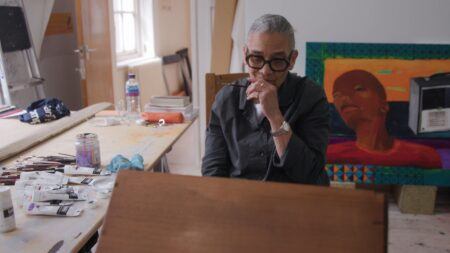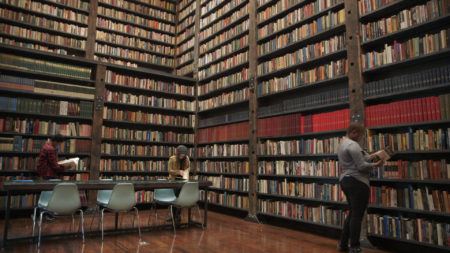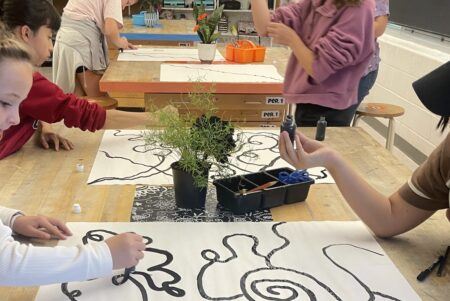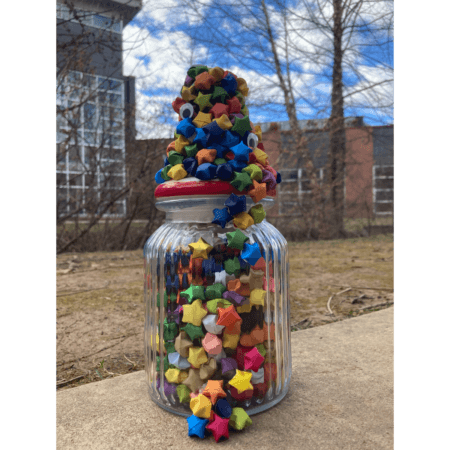Teaching with Contemporary Art
Teaching with Collaboration

Production still from the Extended Play film, “Marcel Dzama: Drawing with Raymond Pettibon” © Art21, Inc. 2019.
Famous artistic collaborations have been mythicized for years. Consider the work of Christo and Jeanne-Claude; Andy Warhol and Jean-Michel Basquiat; Marina Abramović and Ulay; Björk and Matthew Barney; and Bernd and Hilla Becher. As an educator and artist, I am fascinated with collaboration — the energy that it can create and the transcendent work it can produce.
The studio classroom is a space for collaboration and community, the breadth and depth of daily classroom practices from sharing materials, peer-to-peer teaching, and putting one’s work out there for everyone to see initiates a type of collaboration. In my filmmaking classes, there is often just too much work for one person to do it all. Projects are broken down into jobs, responsibilities, and roles, and taken up by participants together.
A functioning and productive studio space is a collaborative space. How can we use artist models to help build the space of collaboration? How can we create projects that establish collaborative practices and norms? Can we conjure the third mind? Beat generation writers William Burroughs and Brion Gysin speculated that collaboration, or “the third mind” as they call it, is not just playing nice together. Rather, it is a “complete fusion in a praxis of two subjectivities” — a mystic combination of two different perspectives that create a new viewpoint, “two subjectivities that metamorphose into a third.” Gysin and Burroughs imply that there is more to collaboration than compromise or merely working together; collaboration can be a generative practice, a way to conjure another presence, a method to bring forth a new entity from the contributions of the collaborators.
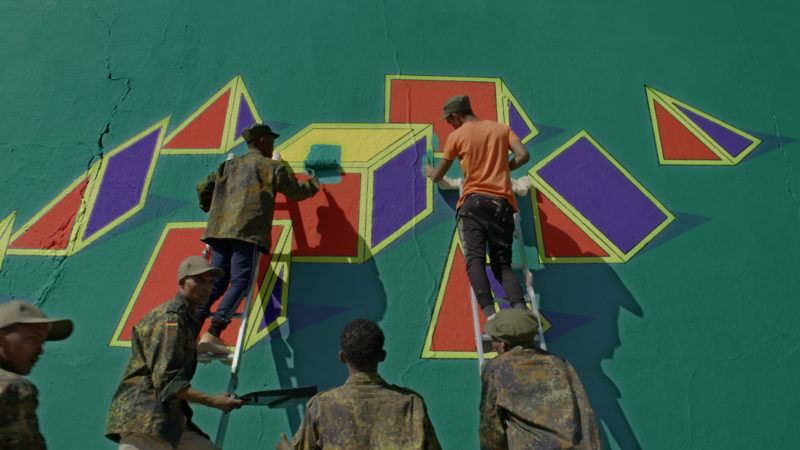
Robin Rhode and his team of assistants. Production still from the Art in the Twenty-First Century Season 9 episode, “Johannesburg.”. © Art21, Inc. 2018.
Over the years, there are a few classroom projects and experiences that I sense have elicited the third mind. I can recall a number of collaborative undertakings, sometimes small and other times overwhelming, that have brought out more from myself, my colleagues, and my students than we could have imagined. I put together a list of a few of them along with a project description and resources. I must credit the people I work with for their willingness to try these out, and also to attempt many other undertakings which have not succeeded. All our work together has been humbling, exciting, and a valuable learning experience.
The surrealist parlor game “exquisite corpse” is a foundational example of artistic collaboration. Permutations of this technique can be used in a variety of strategies. Here are a few that I have experimented with:
- Motion Picture exquisite corpse. A short narrative objective (“deliver a letter”, “get a snack from the vending machine”, “overcome the fear of the outdoors”) is broken down into sections equal to the number of kids in the class. Using one video camera, each student leaves the room to film their section, and when they return, they pass the camera along and tell the next students where their shot ended. When the last segment is completed, we watch the unedited sequence together.
- Three School Exchange. Students make a drawing on heavy stock 8×10” paper. The drawings are sent to the second school. The students at this school add to the drawings. The drawings are then sent to the third school and students at this school add to the drawings. All students are aware that their drawing will be added to and changed by students who they do not know. The students looked at the final pieces and reflected on the way that their initial drawings were augmented and adjusted. This project encouraged students to consider their artwork in conversation with another perspective and to embrace two unknown students’ contributions as co-authors of the work.
- Accidental Intentional, double exposure. A student takes photographs of their home, family, and neighborhood using a full roll of 24 exposure 35mm film. The film is exchanged with a second student that re-exposes the roll of film with photographs of their home, family, and neighborhood. The collaborating students work together to process the film and explore the resulting intentional double exposures and select images to enlarge.
The third mind appears when all these components click. It’s a type of speculative philosophy that can produce creative gold. It also can lead a class to appreciating each other and the holistic value of their studio practice, and commitment to each other through empathy and work.
In the Art21 Extended Play video, “Drawing with Raymond Pettibon” Marcel Dzama describes the magic and the presence of the third mind in their collaborative drawing practice, working together “gives it more of an energy. The work is alive.” Contemporary artists are great models of the usefulness of collaboration.
Watch Andrea’s playlist, “Teaching with Collaboration”
